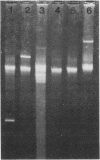Abstract
Achromobacter xylosoxidans, an uncommon yet highly resistant opportunistic pathogen, was isolated from nine hospitalized patients during an 8-month period. It had been isolated from only seven patients with either nonfatal infection or colonization from 1981 to 1984. From June 1985 to January 1986, A. xylosoxidans was isolated 18 times from seven different sites (sputum, 7 times; urine, 4 times; blood, 3 times; and lung, pleural fluid, wound tissue, and tracheal aspirate, 1 time each). Four patients died, including the three with bacteremia. All but two patients had nosocomial infections and either were on the same ward or were cared for by the same staff members. Eleven A. xylosoxidans strains yielded eight distinct plasmids (8, 21, 23, 26, 38, 50, 51, and 64 megadaltons). Whole-cell peptide patterns of 10 of these strains were determined by sodium dodecyl sulfate-polyacrylamide gel electrophoresis. Isolates from the same patient contained the same plasmids and had identical peptide patterns but differed from other strains in both parameters. Plasmids were absent from the two community-acquired isolates. Although nosocomial strains showed similar antibiotic resistance patterns (only moxalactam and ticarcillin-clavulanic acid were uniformly active) and cross-contamination was strongly suggested epidemiologically, results of plasmid and peptide analyses did not support the possibility of a single-strain outbreak.
Full text
PDF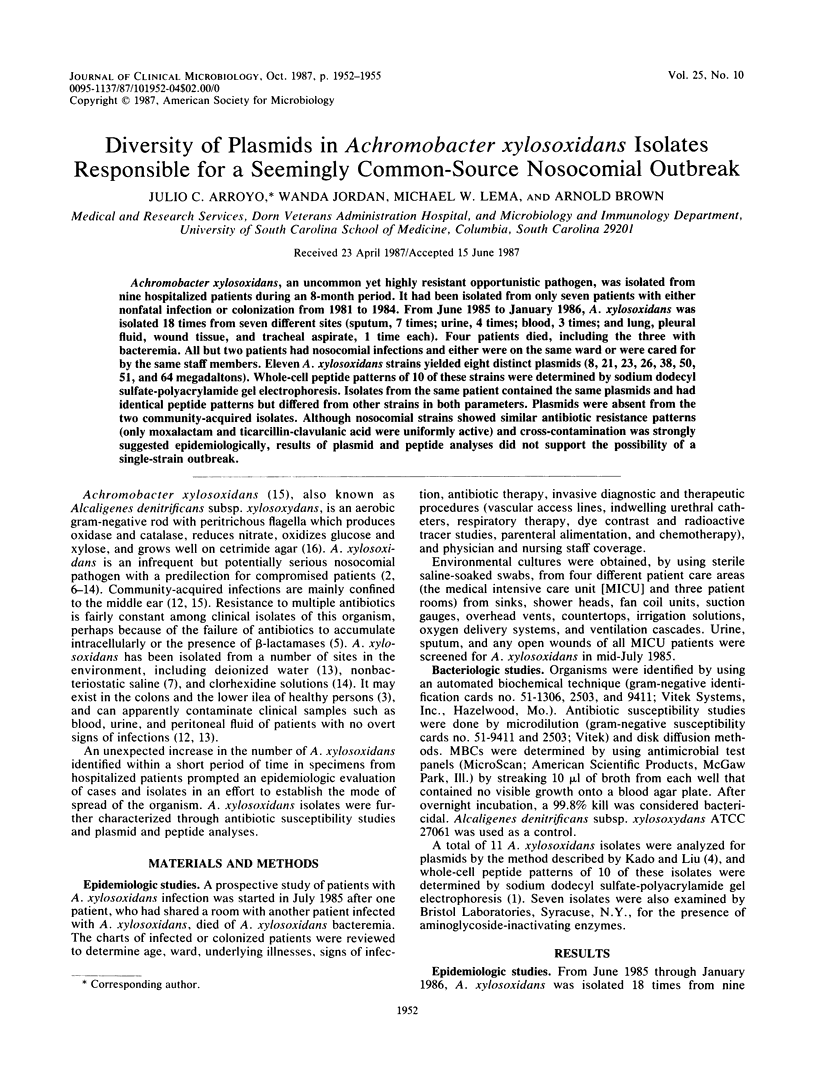
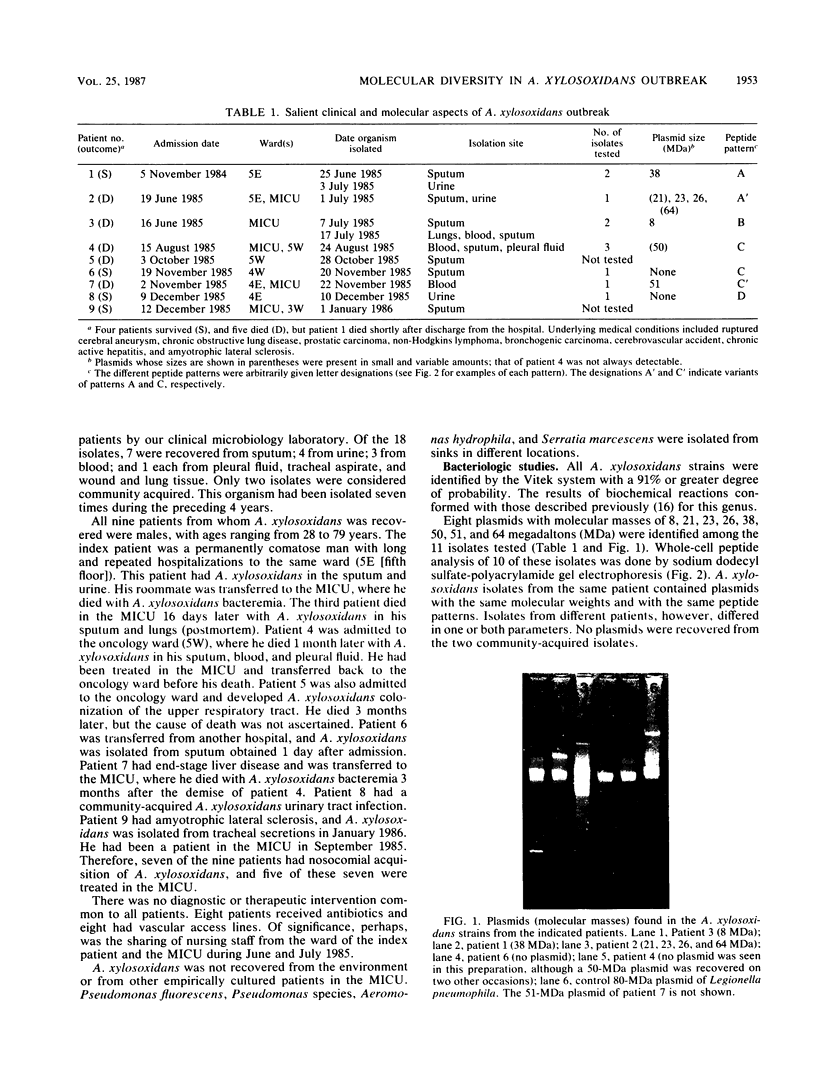
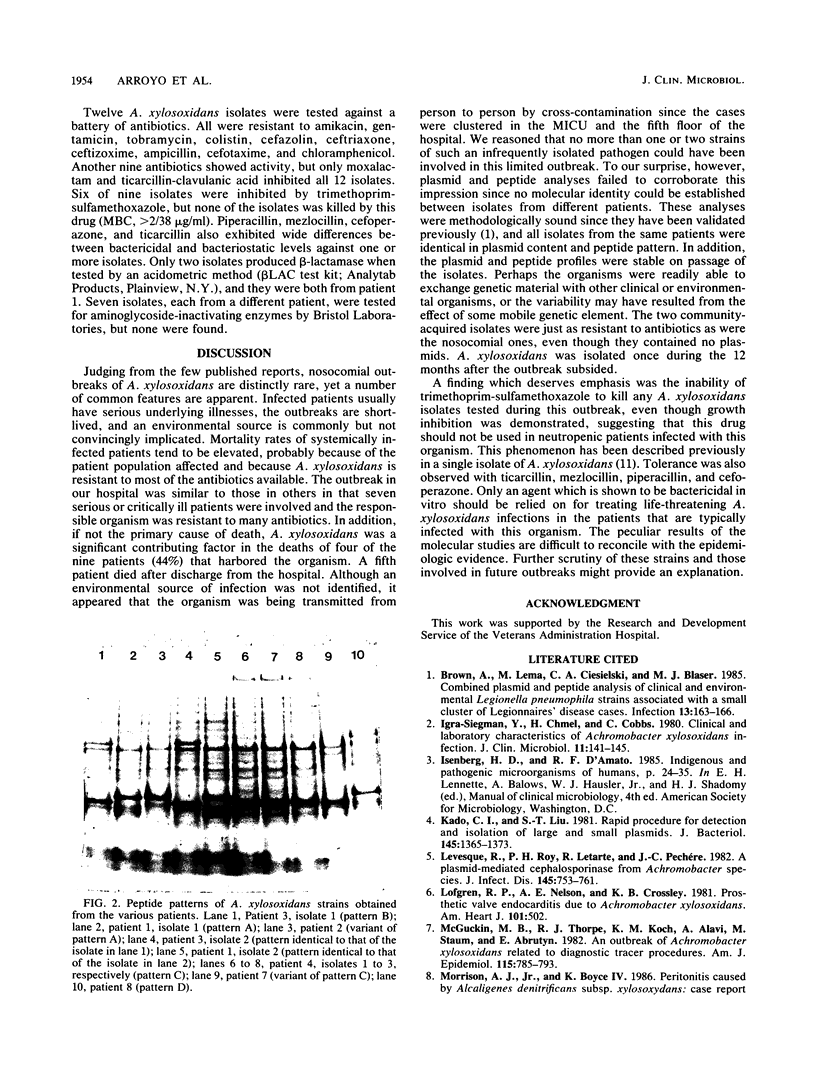
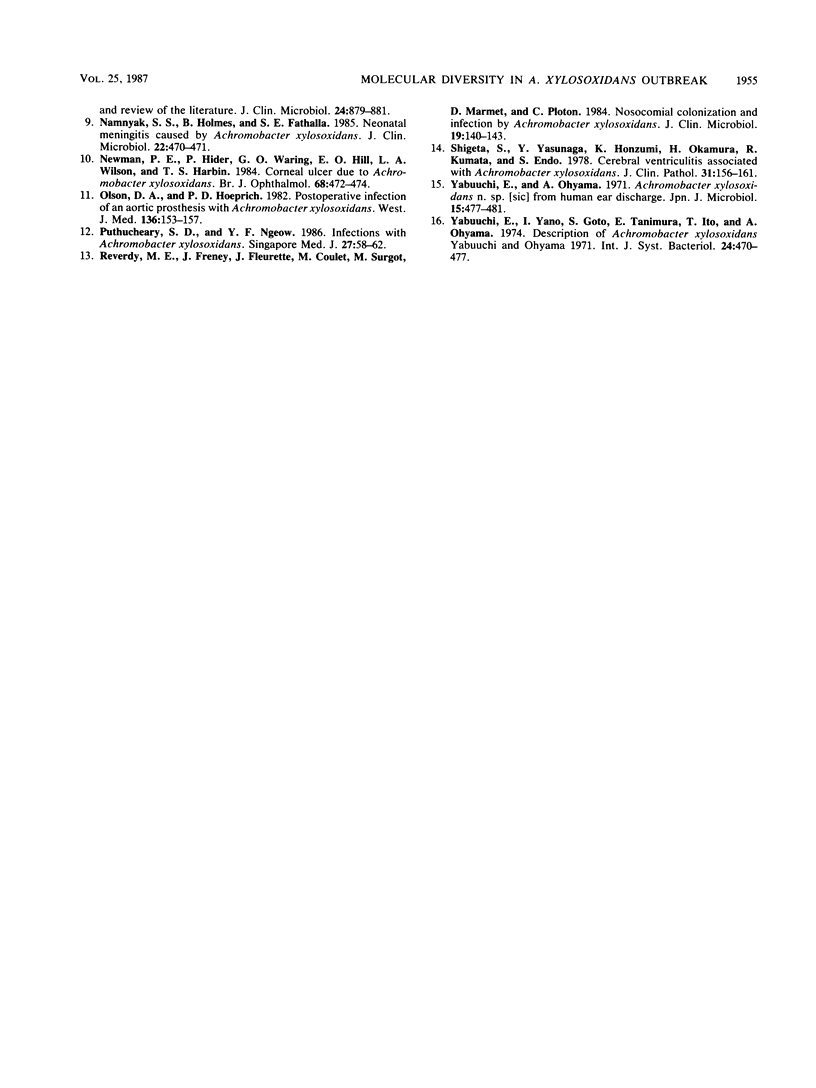
Images in this article
Selected References
These references are in PubMed. This may not be the complete list of references from this article.
- Brown A., Lema M., Ciesielski C. A., Blaser M. J. Combined plasmid and peptide analysis of clinical and environmental Legionella pneumophila strains associated with a small cluster of Legionnaires' disease cases. Infection. 1985 Jul-Aug;13(4):163–166. doi: 10.1007/BF01642803. [DOI] [PubMed] [Google Scholar]
- Igra-Siegman Y., Chmel H., Cobbs C. Clinical and laboratory characteristics of Achromobacter xylosoxidans infection. J Clin Microbiol. 1980 Feb;11(2):141–145. doi: 10.1128/jcm.11.2.141-145.1980. [DOI] [PMC free article] [PubMed] [Google Scholar]
- Kado C. I., Liu S. T. Rapid procedure for detection and isolation of large and small plasmids. J Bacteriol. 1981 Mar;145(3):1365–1373. doi: 10.1128/jb.145.3.1365-1373.1981. [DOI] [PMC free article] [PubMed] [Google Scholar]
- Levesque R., Roy P. H., Letarte R., Pechère J. C. A plasmid-mediated cephalosporinase from Achromobacter species. J Infect Dis. 1982 May;145(5):753–761. doi: 10.1093/infdis/145.2.753. [DOI] [PubMed] [Google Scholar]
- Lofgren R. P., Nelson A. E., Crossley K. B. Prosthetic valve endocarditis due to Achromobacter xylosoxidans. Am Heart J. 1981 Apr;101(4):502–502. doi: 10.1016/0002-8703(81)90144-7. [DOI] [PubMed] [Google Scholar]
- McGuckin M. B., Thorpe R. J., Koch K. M., Alavi A., Staum M., Abrutyn E. An outbreak of Achromobacter xylosoxidans related to diagnostic tracer procedures. Am J Epidemiol. 1982 May;115(5):785–793. doi: 10.1093/oxfordjournals.aje.a113360. [DOI] [PubMed] [Google Scholar]
- Namnyak S. S., Holmes B., Fathalla S. E. Neonatal meningitis caused by Achromobacter xylosoxidans. J Clin Microbiol. 1985 Sep;22(3):470–471. doi: 10.1128/jcm.22.3.470-471.1985. [DOI] [PMC free article] [PubMed] [Google Scholar]
- Newman P. E., Hider P., Waring G. O., 3rd, Hill E. O., Wilson L. A., Harbin T. S. Corneal ulcer due to Achromobacter xylosoxidans. Br J Ophthalmol. 1984 Jul;68(7):472–474. doi: 10.1136/bjo.68.7.472. [DOI] [PMC free article] [PubMed] [Google Scholar]
- Olson D. A., Hoeprich P. D. Postoperative infection of an aortic prosthesis with Achromobacter xylosoxidans. West J Med. 1982 Feb;136(2):153–157. [PMC free article] [PubMed] [Google Scholar]
- Puthucheary S. D., Ngeow Y. F. Infections with Achromobacter xylosoxidans. Singapore Med J. 1986 Feb;27(1):58–62. [PubMed] [Google Scholar]
- Reverdy M. E., Freney J., Fleurette J., Coulet M., Surgot M., Marmet D., Ploton C. Nosocomial colonization and infection by Achromobacter xylosoxidans. J Clin Microbiol. 1984 Feb;19(2):140–143. doi: 10.1128/jcm.19.2.140-143.1984. [DOI] [PMC free article] [PubMed] [Google Scholar]
- Shigeta S., Yasunaga Y., Honzumi K., Okamura H., Kumata R., Endo S. Cerebral ventriculitis associated with Achromobacter xylosoxidans. J Clin Pathol. 1978 Feb;31(2):156–161. doi: 10.1136/jcp.31.2.156. [DOI] [PMC free article] [PubMed] [Google Scholar]
- Yabuuchi E., Oyama A. Achromobacter xylosoxidans n. sp. from human ear discharge. Jpn J Microbiol. 1971 Sep;15(5):477–481. doi: 10.1111/j.1348-0421.1971.tb00607.x. [DOI] [PubMed] [Google Scholar]



